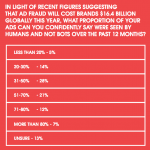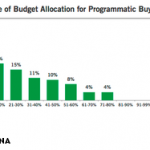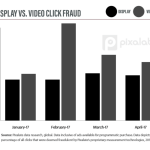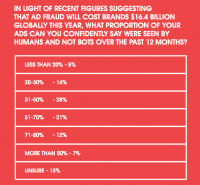Programmatic Still Facing Obstacles
Programmatic Still Facing Obstacles
by Laurie Sullivan , Staff Writer @lauriesullivan, October 2, 2017
The need for more efficient ad targeting with increased transparency began to attract marketers to the use of programmatic engines, but a recent study spearheaded by the CMO Council, “Brand Protection From Digital Content Infection: Safeguarding Brand Reputation Through Diligent Ad Channel Selection,” shows relatively few have adopted the technology.

Industry insiders talk a good talk, meaning many say they want to adopt programmatic media buying based on benefits they’ve heard. But when asked point blank if they use programmatic technology, 38% of the 316 senior brand marketers participating in the latest CMO survey, conducted in partnership with Dow Jones and Pollfish, said either they do not use programmatic technology, or they are not sure how their brands place digital ads.
Hmmm. With that type of response, I’m not completely convinced of the growth timeline eMarketer laid out in April 2017, because marketers seem to face technology hurdles and psychological challenges. The analyst firm estimates nearly four of every five U.S. digital display dollars will transact programmatically in 2017, totaling $32.56 billion. EMarketer estimates deals will rise to 84% share by 2019.
Adloox estimates ad fraud will cost brands more than $16 billion globally in 2017, and reports that more than 20% of total digital ad spend was wasted in 2016.
In the CMO study, the top reasons for going without programmatic include problems with media buying transparency and accountability, lack of ad fraud protection and clarity around website traffic, and concerns about ad misplacements on problem sites and channels.
Regardless of whether or not a marketer currently uses programmatic buying, all are concerned with the risks and vulnerabilities their brands face online, transparency and accountability being the top two issues.
Management is also concerned with programmatic placement and performance, according to 72% of those participating in the survey. Some 22% can name specific examples of how their brand advertising was connected to compromising content or was served to an incorrect or inappropriate audience.
About 67% say media-buying agencies have the primary responsibility to secure programmatic purchases, and should ensure brand advertises are not compromised by controversial content. About 50% also hold digital ad networks responsible, while 49% point to digital media channels to secure brand safety.
One thing’s for certain: Programmatic ad buying isn’t for everyone. The technology is too new and those companies offering the option still have a lot to learn, in my opinion. I’m not suggesting it’s a poorly thought-out option. It’s just a fledgling technology trying to find its wings.
MediaPost.com: Search Marketing Daily
(25)













